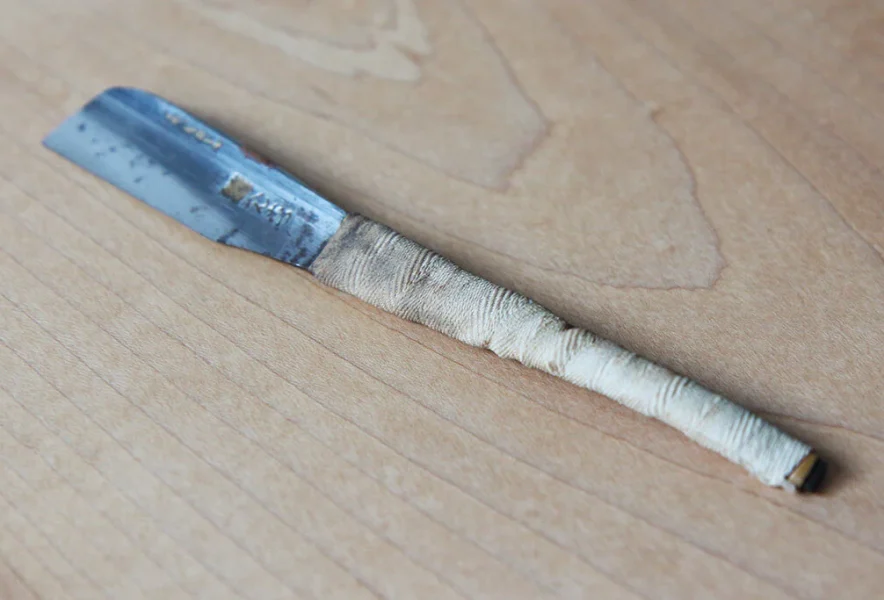Razor introduced from the continent as a legal tool
The razor was introduced to Japan in 538 during the reign of Emperor Kinmei (the 29th). It was originally introduced to Japan at the same time as Buddhism as a tool for monks to shave their hair under strict Buddhist precepts. The name “kazairi” also derives from the shaving of hair.

This “hair shaver” is a wrought iron blade with a thin, flat blade and no cutting edge. Only monks shaved their hair. Other men used a hair plunger to remove hair. In the Warring States period, the custom of shaving hair arose not only among monks but also among the warrior class. Men shaved their tsukiyaki (moonheads), and women used razors to groom their eyebrows and collars.
It is said that the first civilian to use leather was the warlord Oda Nobunaga, who used folding Western leather that came across the sea with the Portuguese civilization. In the Edo period (1603-1867), single-edged Japanese razors, which utilized Japanese sword techniques, became common as a shaving tool. Western razors (leather) were not introduced until after the Meiji era (1868-1912).
The razor was a very expensive tool, so it is fair to say that it is only in modern times that the average person has access to one.
According to the “History of the Cutlery Industry” edited by Sakai City Hall in Osaka Prefecture, during the reign of Hideyoshi, there was a man named Chobei Tenaga who was very skilled at making razors in a place called Nakahama, Ayano-cho in Sakai.
In the Edo period (1603-1867), Sakai became famous nationwide for its razors and kitchen knives.
Later, however, Sakai declined and ceded its razor production to Seki in Mino (present-day Seki City, Gifu Prefecture). Seki had been a producer of famous swords that competed with Bizen’s Nagafune since the Middle Ages, but by the Edo period (1603-1867), demand for swords had declined sharply, so the area became a producer of razors, kitchen knives, saws, and sickles. In addition to this area, Banshu-Miki (present-day Miki City, Hyogo Prefecture) also began to produce swords and samurai swords in the Genpei period, and from the Edo period, stimulated by the extraordinary development of Sakai, it developed by producing agricultural machinery and carpentry tools, while also producing razors. This tradition of cutlery production continued well into the postwar period.
Echigo Sanjo (Sanjo City, Niigata Prefecture) also produced agricultural implements, saws, razors, and scissors from the early Edo period, and was known as Sanjo Kaji.
In the Meiji period (1868-1912), leather was imported from abroad, and by the Taisho period (1912-1926), domestically produced leather was also being produced.

